
Camilla Osorio is a third-year student double majoring in Political Science and International Relations with two certificates in Human Rights & Political Transitions and European & Eurasian Studies. Born and raised in Fort Lauderdale, she has only recently reconnected with her Colombian heritage when she relocated to Miami. With a deep passion for justice and equity, she brings that perspective in her writing and in everything she does. During her free time, Camilla is an avid music listener, curating hyper-specific playlists for any situation.
Rome as Text
“The Highs and Lows of Roma”, by Camilla Osorio of FIU in Roma on May 9-May 23, 2022.
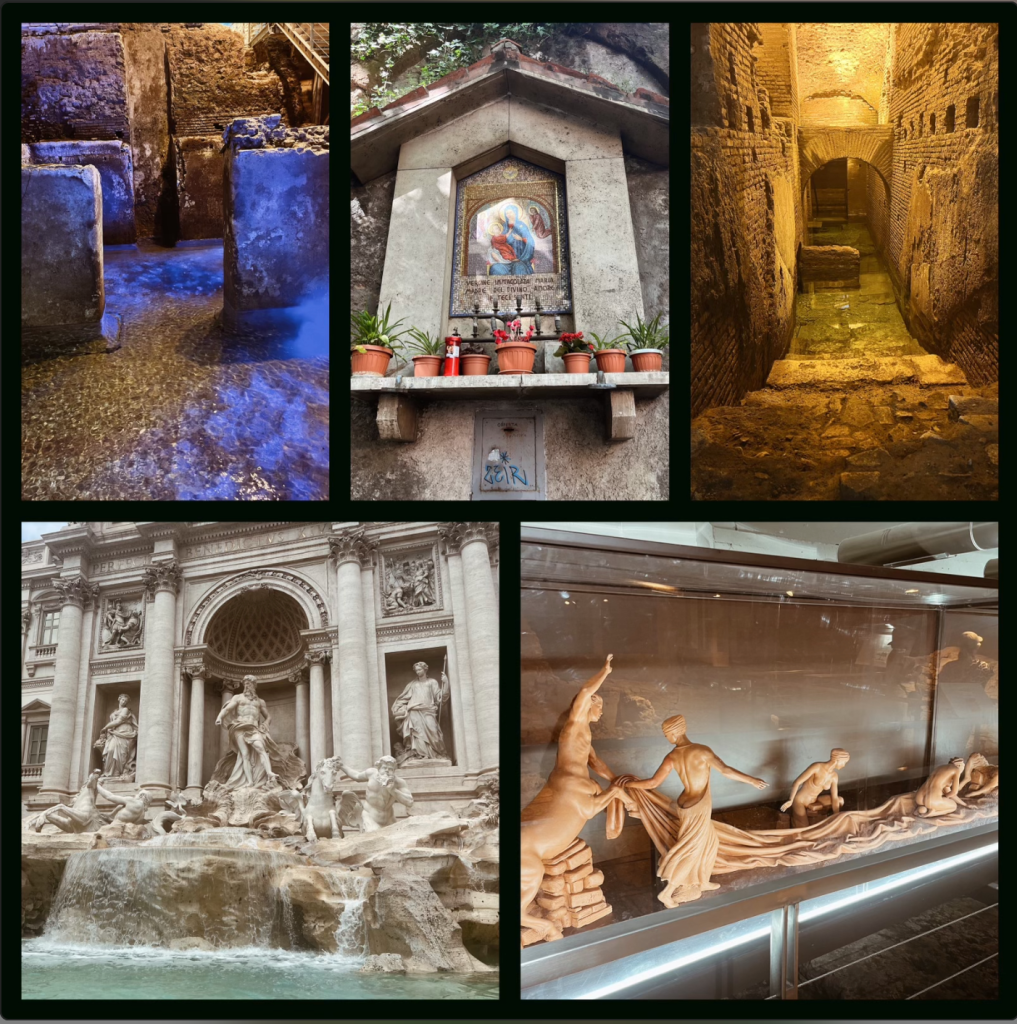
Azienda Ospedaliera San Giovanni Addolorata
The first day after arriving in Rome, I became extremely ill. I was unable to participate in the Roma Walk and the Colosseo class. After being sick for over 30 hours, I ended up visiting something not on our schedule: Azienda Ospedaliera San Giovanni Addolorata, or in English, the San Giovanni Addolorata Hospital. It is one of the largest hospitals in central Italy. The San Giovanni Hospital opened its doors in 1332 and now is a huge block from Piazza di San Giovanni and Via di Villa Fonseca.
I spent about 9 hours in the Covid Isolation Ward (due to a high temperature during intake) and spent time with the nurses in full hazmat suits. Many blood tests, an IV fluid, and a deeply violating covid test later, I found out I had a gastrointestinal infection most likely caused by someone who handled my food without washing their hands. The most positive part of this whole event was finding out that the hospital is almost 700 years old. It’s absolutely bewildering that the hospital has been taking care of people for so long.
Trevi Fountain: As Above, So Below
The Trevi Fountain is the largest Baroque fountain in Roma and took 30 years to complete (1732-1762). This fountain is world-famous and has appeared in many films like The Lizzie McGuire Movie, Roman Holiday, and Angels and Demons.
Thanks to the help of TikTok, I found the archaeological area of Vicus Caprarius, known as the City of Water. It is a small museum just around the corner of the Trevi Fountain that showcases the Aqua Virgo aqueduct, the fire of Nero, the sack of Alaric, and the siege of the Goths, just 9 meters below ground. The Aqua Virgo aqueduct supplies the water to the Trevi. Supposedly, a virgin in 19 BC helped Roman technicians locate the pure water source, thus giving it its namesake.
Exploring on a free day, Emma, Pauline, and I were able to see the water that flows from the Trevi Fountain as well as countless pieces of art including a statue of the head of Alexander Helios. The water cooled the museum and the sound lulled over the entire visit. While a short visit, I really enjoyed spending time in a less visited sight of the Trevi. Our day finished by stopping at a nearby restaurant for some carbonara and walking aimlessly down the streets – the perfect end to a free day in the Eternal City.
Pompeii as Text
“Pompeii’s Legalized Lupanars”, by Camilla Osorio of FIU on May 16, 2o22.
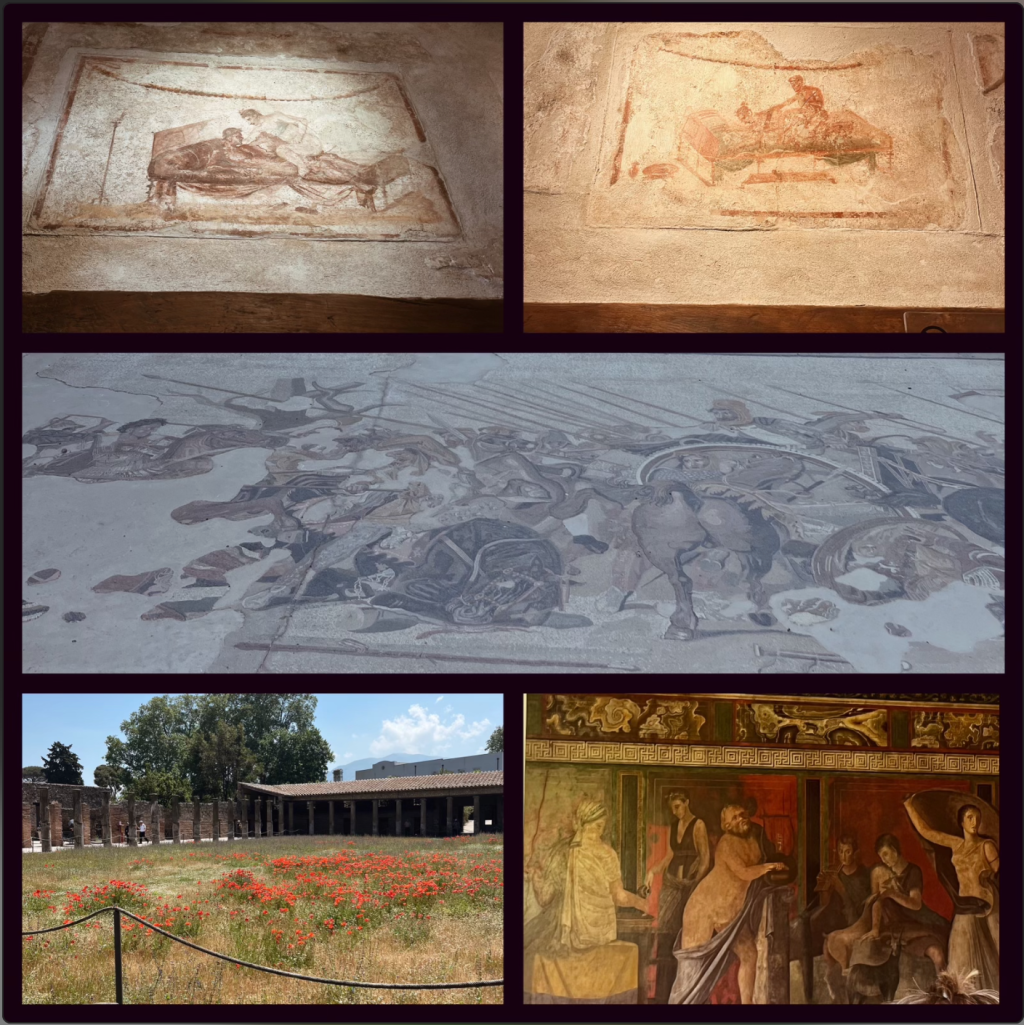
As the world is still discussing and fighting for sex worker’s right’s, Pompeii had legalized brothels with phallic symbols on the ground pointing you to their direction. The Roman brothel catered to men who seeked either male or female services. The brothels were called the Lupanar, latin for wolf-den because a prostitute was called a Lupa, or she-wolf. Frescos, illustrations of the services offered, lined the top of the brothels to help the client pick out exactly what they wanted. During their heyday, the outdoor of the brothels would have phallic-shaped lamps. When lit, the room was busy. Unlit, then it means a client could walk in. The women who worked in the brothels often worked in archways, public baths, and other areas. They were known to have a certain whistle/call to draw potential client’s attention.
Mark Twain visited the site five years after its excavation in 1862, remarking on the irony that women at the time were not allowed to visit because of the wall paintings, stating “no pen could have the hardihood to describe the frescos”. How cheeky of him.
The sex workers were usually slaves or lower class people, which meant that they were treated poorly and indifferent to society. They were seen as fulfilling a purpose and outside of that function, they were irrelevant. Sex was clearly part of Pompeii’s daily life, both accepted and seen as natural, but despite this, prostitutes weren’t seen with respect. Sex work created a huge stigma that made them unable to participate in society.
Nearly 2,000 years later, sex work and prostitutes are seen in a negative light and are only socially acknowledged when people need their services. It’s hard to be optimistic about this getting better when there is an increase in the restriction of women’s bodily autonomy and female sexual liberation is still seen as taboo.
Tivoli as Text
“Giardini Delle Meraviglie”, by Camilla Osorio of FIU on May 13, 2o22.

Villa d’Este was commissioned by Cardinal Ippolito II d’Este. The Este family were prominent patrons of the arts and scholars of the Renaissance. After trying and failing to become Pope, he was never selected and decided to commission Pirro Ligorio, architect and painter of the Renaissance, to plan his villa and garden. Taking marble and statues from Hadrian’s villa, Ligorio and court architect, Alberto Galvani, began their plan to create the masterpiece.
The villa has been one of the most remarkable depictions of Renaissance culture. Due to its innovation, originality, and brilliance – especially in the fountains and ornaments – the water garden is truly one of the most incomparable pieces of architecture in the 16th century.
The garden includes 51 fountains, 64 waterfalls, and 220 basins; all working without the use of pumps. La Fontana dell’Ovato was one of the first fountains to be included in the garden and includes sea nymphs who are carrying vases where the stream comes out of. Easily the most famous part of the garden, this fountain was fascinating to see for the first time. The Hundred Fountains has nearly 300 sprouts and the wall is beautifully covered with greenery, providing such a semblance of peace while walking through.
Admittedly, I was a big Lizzie McGuire the Movie fan, so I had known of the scenes filmed in front of the Oval Fountain and the Hundred Fountains. Once Professor Bailly had told us that we would see the fountains from the movie, all the energy depleted from my body from the long day came immediately back. I happily struggled with the stairs to be able to marvel at the garden. Spending the day in Hadrian’s Villa and then Villa d’Este was easily one of the best days I’ve had. It’s not difficult to realize why both are World Heritage sites. They call the Villa d’Este’s garden a wonder and I can’t think of a better word to describe it.
Florence as Text
“Blooming with Botticelli”, by Camilla Osorio of FIU on May 23-30, 2022.
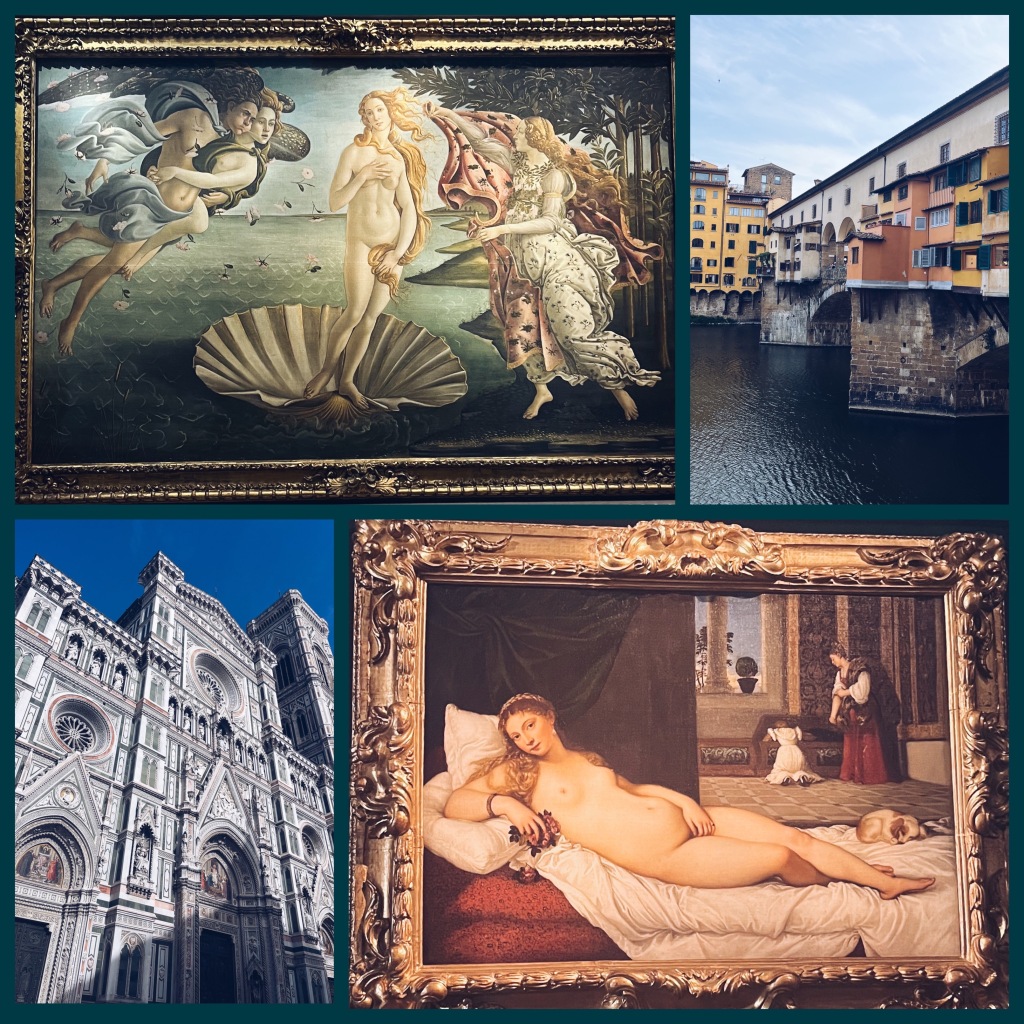
Female sexuality in art and history has always been a taboo topic and it continues to be a topic few choose to venture into. Female gratification and sexual pleasure are rarely discussed, hell, some people still believe that female satisfaction in the bedroom isn’t a requirement to this day.
Keeping the limitations of female sexuality in mind, I fell in love with the portrayal of women and their sexuality in two specific artworks at the Uffizi Gallery: the Birth of Venus and Primavera by Botticelli. I have to give each painting justice so I will break them down individually.
The Birth of Venus by Botticelli depicts the goddess Venus after being born from seafoam. She is naked and standing on top of a shell, with her hands covering her modesty while leaning on one hip. She is the pinnacle of sexuality and the divine feminine. It’s difficult to tell if Botticelli was trying to highlight or if he was trying to conceal her innate sexuality by having Venus use her hands to conceal herself. The woman on the right is a nymph of Spring, seen by the flowers on and around her. She is quickly attending to Venus with a cloak to cover her body. On the left is Wind God Zephyr and Goddess of Spring, Chloris. They are blowing Venus onto shore.
Primavera, another beautiful piece of art by Botticelli. In this piece, elements of springtime and the coming of a new season but it’s central theme is love and sexuality. Venus is yet again a main character; her dress is cheekily painted in the shape of a vulva on her stomach, symbolizing sexuality and the coming of spring. The three women in sheer cloth are representations of the three virtues that women must adhere to: chastity, love, and beauty. There is another call back to the Birth of Venus with Zephyr, the Wind God and Chloris, a young woman he rapes. After which, he turns her into the goddess of flowers, which is portrayed with the flowers coming out of her mouth as she is running away from him. Rarely depicted, there is a pregnant woman in a floral robe walking towards Venus, symbolizing the birth of spring.
Botticelli was revolutionary in painting the Birth of Venus and Primavera. His depictions of women, despite having notations of male gaze, are a huge step forward (especially during its time) in showing women comfortable in their blooming sexuality.
Pisa as Text
“Acoustic Wonders”, by Camilla Osorio of FIU on May 25, 2022.
People travel all over the world to come to Pisa for one thing: the Pisa Baptistery of course. Pisa is a city in Tuscany and is known for its leaning bell tower, but it has much more to offer than a slanted tower. The city has many historical churches, museums, and other places with amazing architecture.
I grew up with an immense love of music; the sound would be the first thing I would wake up to and the last thing before going to bed. I started playing classical music at a young age as well as ballet, which only furthered my connection and interest in music.
When Professor Bailly took the class into the Pisa Baptistery and said he had a surprise for us, I had to admit, I was nervous and hesitant. Last time he had a surprise for us, he took us into the Cripta dei Frati Cappuccini, also known as a monk crypt with over 3,700 bodies inside. This venture led me to a couple tears, a long period of silence, and to suffer a minor break in the concept of life and death and time. So needless to say, I was uneasy going into the next surprise.
However, I was pleasantly surprised. Due to the lack of decoration and artwork in the entirety of the baptistery, the acoustics are phenomenal. A woman who worked at the church walked to the center and began signing acoustically, instantly silencing the visitors inside. Her voice echoed throughout the building and everyone was entranced. I hadn’t heard anything like this before and this was a surprise that I truly enjoyed.
Cinque Terre as Text
“Young and Reckless” by Camilla Osorio of FIU on May 30-June 1, 2022
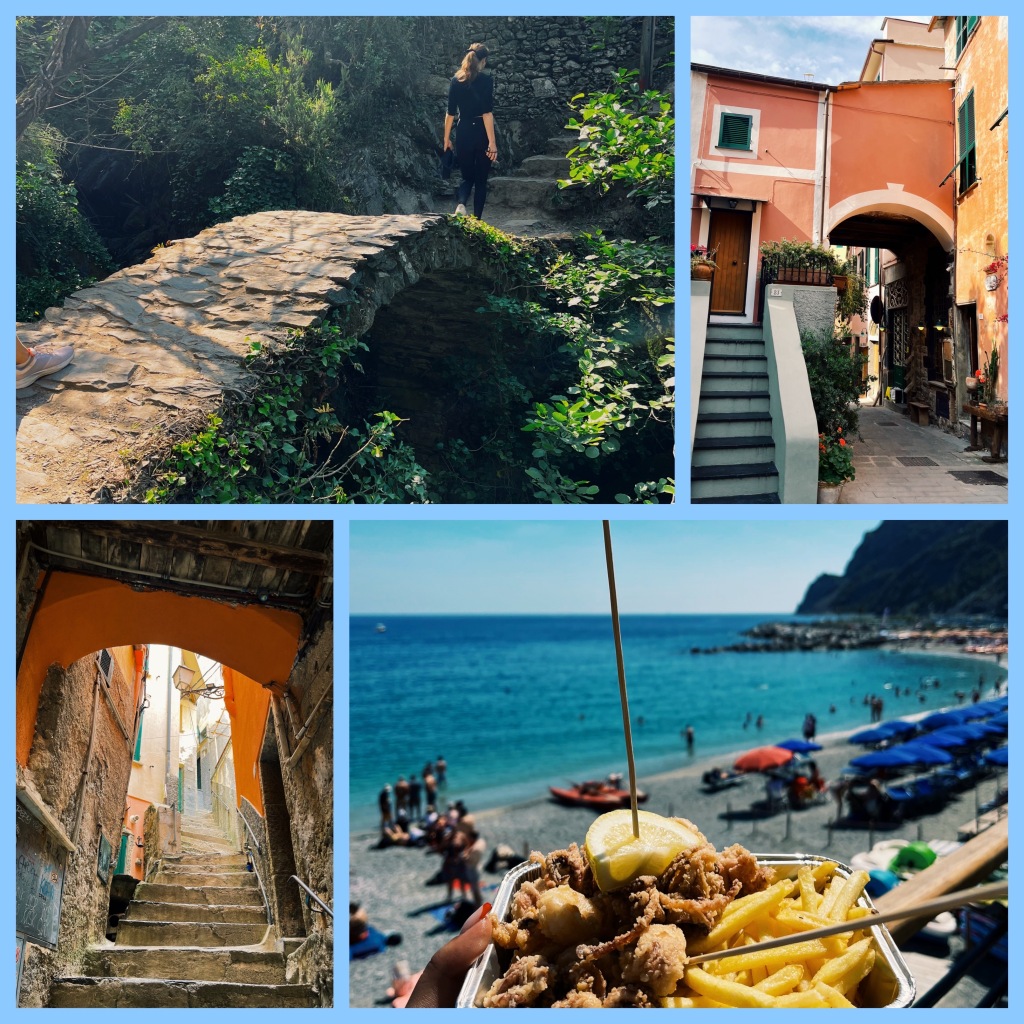
A trip to the Mediterranean coast is exactly what the class needed after spending the past three weeks in the city (with day trips to the countryside, of course). Bustling city life and chaotic days are always fun, but taking some time away and quite literally escaping to the mountains was everything we needed. The Five Lands are coastal villages in Liguria which are all part of the Cinque Terre National Park, which is considered a World Heritage Site by UNESCO, which basically means this land has “outstanding universal value and transcends national boundaries for present and future generations”.
Traveling within Cinque Terre is a bit unconventional, because until recently, visitors could only travel between villages via hike or by train. Traveling by car is a difficult method due to narrow roads and by boat can be costly for those with a smaller budget (and it doesn’t stop in Corniglia). Hiking between villages is easily the best method of travel. Being able to take in breathtaking views of the harbor, cliffs, farms, and homes while reaching incredible heights is something that everyone who visits should do.
The Mediterranean water was absolutely spectacular; it completely shoots the Atlantic coast out of the water. The shore was mainly rocks and little pebbles and the clarity of the water allowed us to see all the marinelife swimming alongside us. As a young (and somewhat reckless) traveler, I was amped up to go cliff jumping. On our last full day, we went to Manarola to do exactly that. While observing, I noticed the different kinds of jumpers: the screamers, the nose pluggers, the hesitant ones, and the flippers. Above the sea level there was a large group of observers, with gelato in hand, enjoying the view and the swimmers. Our group went to the bottom to finally do it ourselves. Climbing to the top of the rock was made difficult but diving into the refreshing crystalline water was well worth the struggle.
Cinque Terre was somewhere I had long wanted to visit and I couldn’t be more grateful to be able to have experiences like the ones I’ve had on this trip so far.
Venice as Text
“An Ode To Those Who Paved the Way” by Camilla Osorio of FIU on June 3-7, 2022.
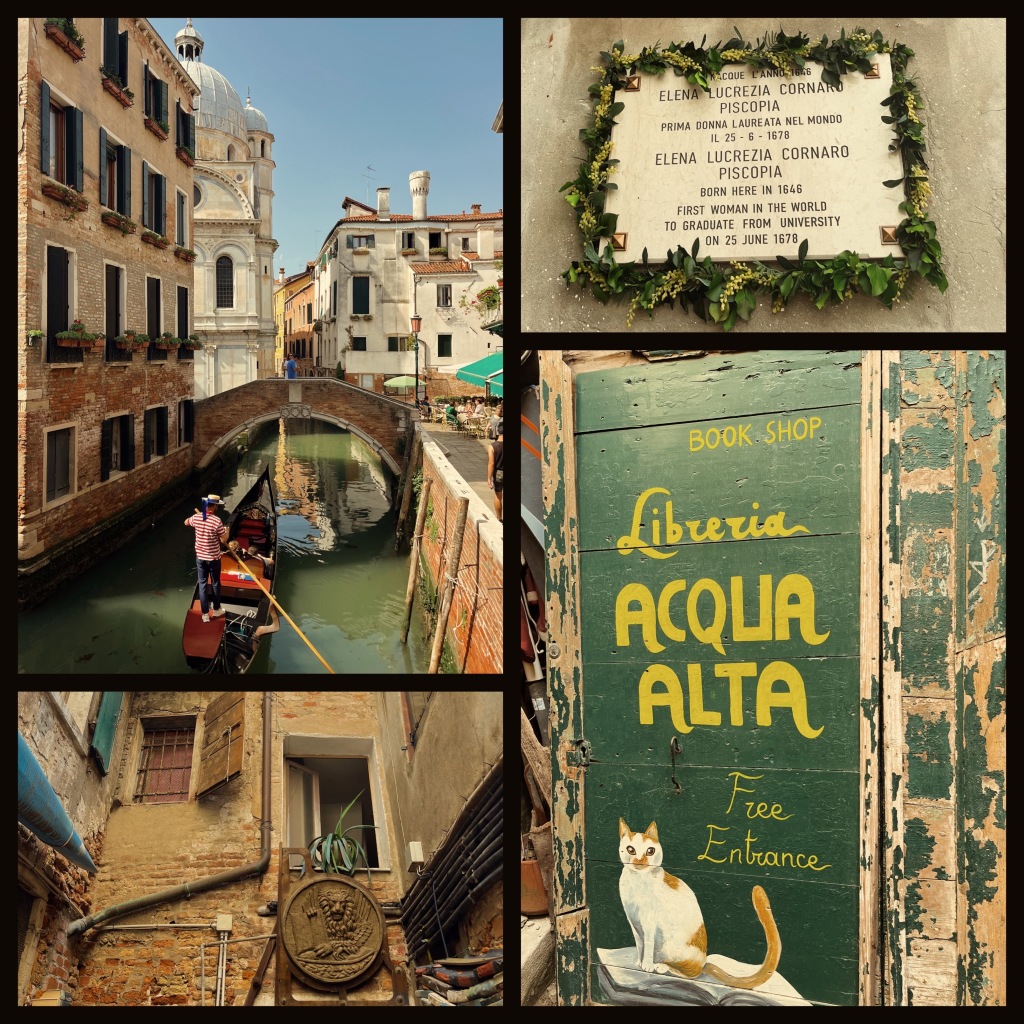
Elena Lucrezia Cornaro Piscopia isn’t a household name, but I argue that she should be. With more women enrolled in universities and colleges than men, we should look back to the women who made the journey through higher education first. Elena Cornaro was a Venetian noble who became one of the first women to get a degree and the first woman to get a Doctorate in Philosophy. After her philosophy tutor, Carlo Rinaldini, petitioned the University of Padua to allow her to pursue a degree in theology, which was rejected by the Cardinal on the basis that she was a woman. The Cardinal did grant her to get a degree in philosophy and she earned her degree in 1678.
It’s incredible to hear the story of Elena Cornaro as a woman pursuing higher education. The Italia Study abroad program was a class of 17 women and it’s astounding to see how the global education system has changed in nearly 350 years. My parents fought hard to allow me to have an education and instilled in myself and my sisters the importance of getting an education because it is a tool that is necessary for the rest of our lives. Stopping by the building where she was born, there is a plaque on the wall as an ode to her and what she represents to women in education. Academia is still a difficult place to navigate as a woman (even more so as a woman of color) and to see the commemoration of her accomplishments was encouraging to see. Being in a class full of amazing women for the past month only makes me excited to see where each of us will go in our respective fields and I know that we all have something amazing to offer, just like our educational foremothers did.